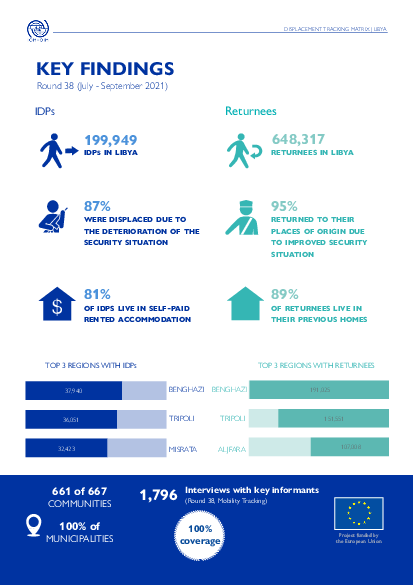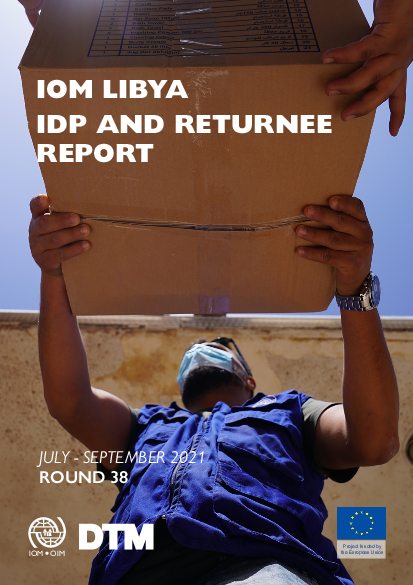-
Countries
-
Data and Analysis
-
Special Focus
-
Crisis Responses

Contact
DTM Turkey, dtmturkey@iom.int
Language
English
Location
Republic of Türkiye
Period Covered
Oct 01 2021
Oct 31 2021
Activity
- Flow Monitoring Survey
- Flow Monitoring
- Migrants presence
- Mobility Tracking
According to the latest available figures from the Turkish Directorate General of Migration Management (DGMM), there are more than 4.9* million foreign nationals present in Turkish territory, 3.7* million of whom are seeking international protection.
Most of those seeking international protection are Syrians (3,726,206* individuals) who are granted the temporary protection status in Turkey.
In addition, international protection applicants are most frequently nationals of Afghanistan, the Islamic Republic of Iran and Iraq constitute another group of foreign nationals. According to DGMM, there were 31,334* international protection applicants present in Turkey in 20201, published annually. Moreover, according to UNHCR**, there are close to 330,000 international protection status holders and asylum seekers. In addition, there are 1,241,844* foreign nationals under residence permit holder status; this number includes humanitarian residence holders.
*Data Source DGMM, 28.10.2021
**Data source UNHCR, September 2021
Flow Monitoring is a component of DTM and it is used to track population movements inside a country, within a region or across regions.
The dataset includes:
- monthly and daily figures on arrivals by sea and by land to Europe (Bulgaria, Cyprus, Greece, Italy, Malta, Spain)
- monthly and daily figures on transits along the Western Balkan region (Albania, Bosnia and Herzegovina, Croatia, Montenegro, North Macedonia, Romania, Slovenia, Serbia, Kosovo*)
- figures on reported country of origin of arrivals and transits
- figures on reported migrant presence in reception centers
Population Groups
Survey Methodology
Unit of Analysis Or Observation
Type of Survey or Assessment
Keywords
Geographical Scope
Administrative boundaries with available data
The current dataset covers the following administrative boundaries
In Q3 of 2021, a total of 49,092 of migrants and refugees were registered arriving through the three Mediterranean routes and the Western African Atlantic route to Europe, which is 55 per cent higher than the 31,563 arrivals registered in the same period in 2020, and 8 per cent more than the 45,308 registered in Q3 of 2019. Arrivals in Q3 of 2021 are 38 per cent higher compared to the previous reporting period (35,445 in Q2 2021).
More than half (53%) of all registered individuals in Q3 2021 arrived in Europe via the Central Mediterranean route to Italy and Malta (26,017). Around 31 per cent of arrivals were registered in Spain, through the Western Mediterranean and Western African Atlantic routes (15,130). The remaining 16 per cent travelled through the Eastern Mediterranean route to Greece, Cyprus and Bulgaria (7,945).
Compared to Q3 of last year, arrivals have increased in absolute numbers in all routes to Europe: +51 per cent of arrivals via the Central Mediterranean route (CMR), +44 per cent of arrivals via the Western Mediterranean (WMR) and Western African Atlantic routes (WAAR), and + 108 per cent of through the Eastern Mediterranean route (EMR) compared to the arrivals registered in Q3 of 2020.
Contact
dtmlibya@iom.int
Location
Libya
Activity
- Mobility Tracking
- Baseline Assessment
Period Covered
Jul 01 2021 -Sep 30 2021
A baseline assessment is a sub-component of mobility tracking. It aims to collect data on IDP, migrant or returnee population presence in a defined administrative area of the country.
Population Groups
Survey Methodology
Unit of Analysis Or Observation
Type of Survey or Assessment
Keywords
Geographical Scope
Administrative boundaries with available data
The current dataset covers the following administrative boundaries

Contact
DTM Libya, DTMLibyateam@iom.int
Language
English
Location
Libya
Period Covered
Jul 01 2021
Sep 30 2021
Activity
- Mobility Tracking
- Baseline Assessment
This infographic presents the key findings of Round 38 of the mobility tracking component of the Displacement Tracking Matrix (DTM) programme in Libya.

Contact
DTM Libya, DTMLibyateam@iom.int
Language
English
Location
Libya
Period Covered
Jul 01 2021
Sep 30 2021
Activity
- Mobility Tracking
- Baseline Assessment
This report presents the IDP and returnee data collected between July – September 2021. The data and findings represent Round 38 of the Displacement Tracking Matrix’s (DTM) Mobility Tracking in Libya. A year since the ceasefire agreement signed on 23 October 2021, the general security situation in Libya has remained stable, with no new mass displacements reported during this year while the trend of previously displaced families returning to their places of origin continued. However, by the end of September 2021, 199,949 individuals were still displaced in Libya despite the cessation of hostilities and improvements in the general security situation. This indicates that while the overall humanitarian situation has improved, Libya remains in the post-crisis stage of transition and recovery.

